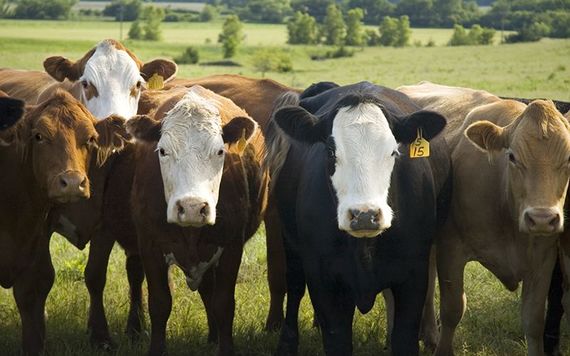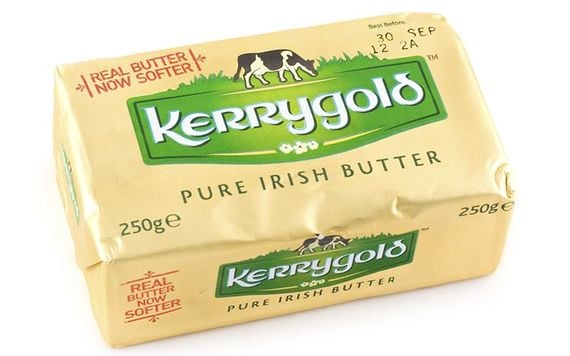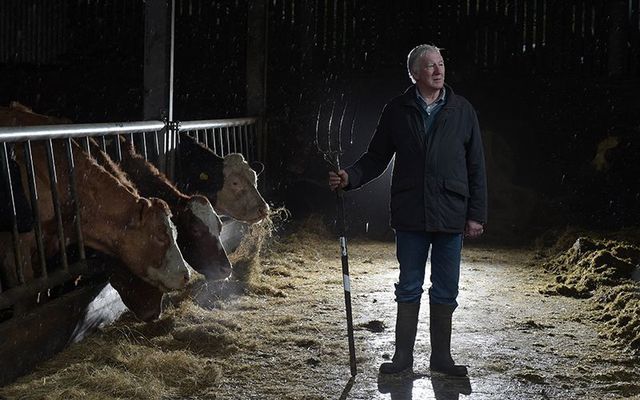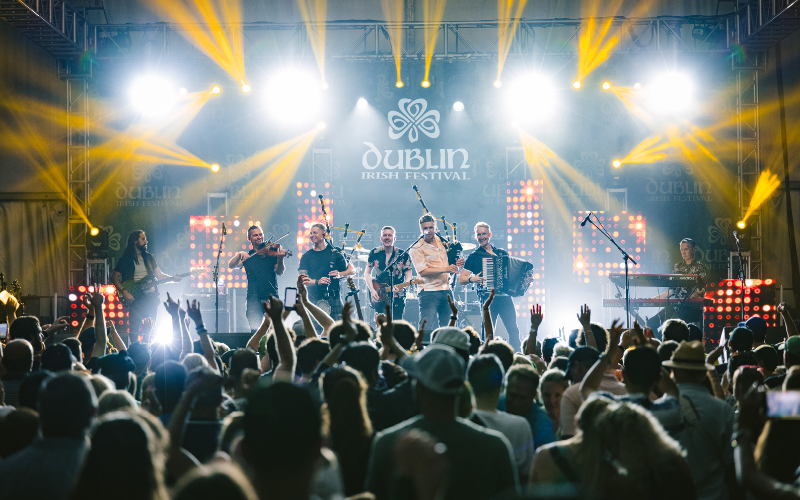For the past few weeks, farmers around Ireland have been picketing meat factories in a campaign to get a fair price for their cattle. Meat in the supermarkets here is quite expensive, but only a small fraction of the price consumers pay ends up with the farmers who produce it.
The biggest bite is taken by the supermarkets and shops that keep half of the retail price. Before that happens, factories and processors have taken their bite.
From a nice big steak that costs the Irish shopper €10, the supermarket keeps €5, the processor gets €3 and the farmer ends up with just €2. This is extremely frustrating for farmers who spend two years rearing an animal and then see the processors and supermarkets that handle the meat for just a few days taking nearly all the profit.
Part of the problem is that the meat industry here is controlled by a few big players. But the problems in the domestic market are dwarfed by those posed by weak demand abroad.
Making the situation even worse for farmers here is the current international market for meat exports, traditionally a key factor in supporting beef prices for Irish farmers. Eight out of ten cattle produced in Ireland become meat exports, but prices recently have been hit hard by the fall in the value of sterling in the U.K. and weakening demand there, in Europe and elsewhere.
The problem has now reached the point where Irish farmers are making a loss on every animal. They simply cannot continue which is why they have taken to the streets in protest and stopped trucks entering meat factories.

Irish famers are making a loss with every animal.
After some angry confrontations, a truce was reached last week and talks are now underway. But there is no easy answer to the situation.
The underlying reality is that Irish beef farmers are facing a very difficult future that could well change the face of rural Ireland forever. A triple whammy of challenges means that the traditional small family farms that produce cattle and give rural Ireland its character and charm could be wiped out. What the Irish countryside will look like in the future may be very different as a result.
The first challenge is Brexit. The second will be the opening up of the market in Europe to South American beef under the recent Mercosur trade agreement.
And the third is the UN's Inter-Governmental Panel on Climate Change report last week which revealed that 23 percent of global carbon emissions are being caused by meat-eating and livestock farming. The report, which made headlines around the world, called for drastic reductions in cattle numbers and changes in diets.
For Irish farmers, as we said, it's a triple whammy of bad news that may have devastating consequences.
Dairying and milk products are the one bright spot in all of this and are still very profitable for Irish farmers. But dairying has to be done at scale and on good land to be profitable. It is not suitable for the majority of small farms here with marginal land and suckler herds that produce a dozen or two cattle for sale every year.
And even in the dairying sector, there are worrying signs. Walk down the aisles in any Irish supermarket these days and you pass long shelves of alternatives to butter, far more space than is given to the Kerrygold and other pure butter brands.

Irish Kerrygold butter made with the milk of grass-fed Irish cattle.
The same thing is now happening with all the alternatives to cow's milk -- cartons of almond milk, oat milk, rice milk, and soya milk now take up more space with each passing month. As one farmer here claimed, it's a con – one-third water and two-thirds marketing, with a pinch of nut dust added -- but it's working for them.
There are, of course, wider factors to be considered in all of this, like what constitutes a healthy diet and how much meat, butter, cheese, eggs and so on we should eat.
One of the problems is that scientific advice keeps on changing. The old adage of a little of what you fancy and a balanced, mixed diet is probably more useful.
The Brexit challenge to farming
For farmers here, the biggest and most immediate challenge is Brexit. Irish meat exports are worth close to €4 billion a year, and half of that still goes to the U.K. even though we have been trying to widen our markets. This means beef farmers in Ireland are still hugely dependent on the British market.
For them, the prospect of a hard Brexit in which the U.K. crashes out of the EU and is free to import cheap beef from around the world under WTO rules is an absolute nightmare. Cattle prices in Ireland, already below what is profitable, would collapse.
Other sectors of Irish farming would also be hit and some might struggle to survive. The future for farming here in general following a hard Brexit would be bleak.
With the crisis Irish farming is facing with Brexit, the EU could not have chosen a worse time to conclude the Mercosur deal which will let more South American beef into Europe in the future. Of course, Mercosur is about much more than just farm produce and will be beneficial to other sectors of the Irish economy which export to South America. But that is little consolation to farmers here.
Climate change and Irish farmers
The UN report also links into this tale of woe, not least because everyone is concerned about climate change. The report is likely to influence individual behavior in developed countries where food shopping is a choice rather than simply a matter of survival and will reinforce the move among these consumers towards eating less meat and dairy produce.
On a macro level, it could eventually lead to international agreement to put a cap on cattle numbers in individual countries, something that would pose more problems for Irish farmers.
If that does happen at some point it would be very unfair to Ireland, where farming is far more environmentally friendly than in many other countries. We are not burning down vast areas of rainforest to clear more land for livestock like is happening in Brazil, for example. Our natural advantages as a producer of beef and dairy mean that we can do it better than anywhere else, with less impact on climate.
This is because we have a grass-fed system, thanks to our fertile land and geographical position which brings us so much rain. Together these result in rich grassland (the 40 shades of green) that minimizes the need for other environmentally damaging inputs.
If we assume that there will always be a global demand for beef and dairy produce, even if it is on a reduced scale in the future, then the UN needs to think about where it can be best produced to limit climate damage. If we think about global warming on a global scale, then which countries are best placed to produce the beef and dairy produce that the world will need?
High on that list -- and perhaps at the very top -- would be Ireland. That is because greenhouse gas emissions per pound of beef or cheese produced are lower in grass-fed farming systems.
There is no need for forests to be cleared to grow fodder to feed animals, fodder that has to be shipped halfway around the world. There is much lower use of fertilizers and pesticides. In addition, there is less need for drug use to keep cattle healthy in crowded feedlots and no need for hormones to get cattle to put on weight.
The fact is that lowering the impact of cows and cattle on climate change is about far more than just the methane that the animals emit. Too often the discussion on the problem is limited to that, rather than including the many hidden factors that are part of beef and dairy production in countries with farming systems that are not natural and grass-based.
Such discussions are for the future. The immediate problem facing farming here is Brexit, which could happen with a U.K. no-deal crash-out in two and a half months.
If that does happen it will be a disaster for Ireland, as we keep saying here. But for many Irish farmers, it really will be the end of the line.
Read more: How a falling window led to a major archaeological discovery in Ireland




Comments